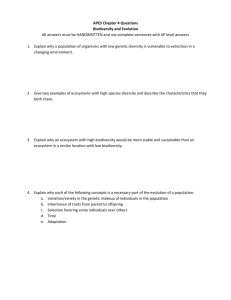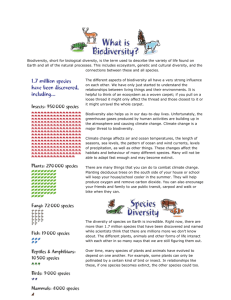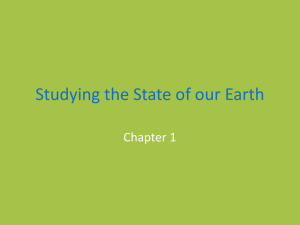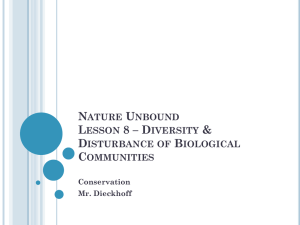BIODIVERSITY_notes
advertisement
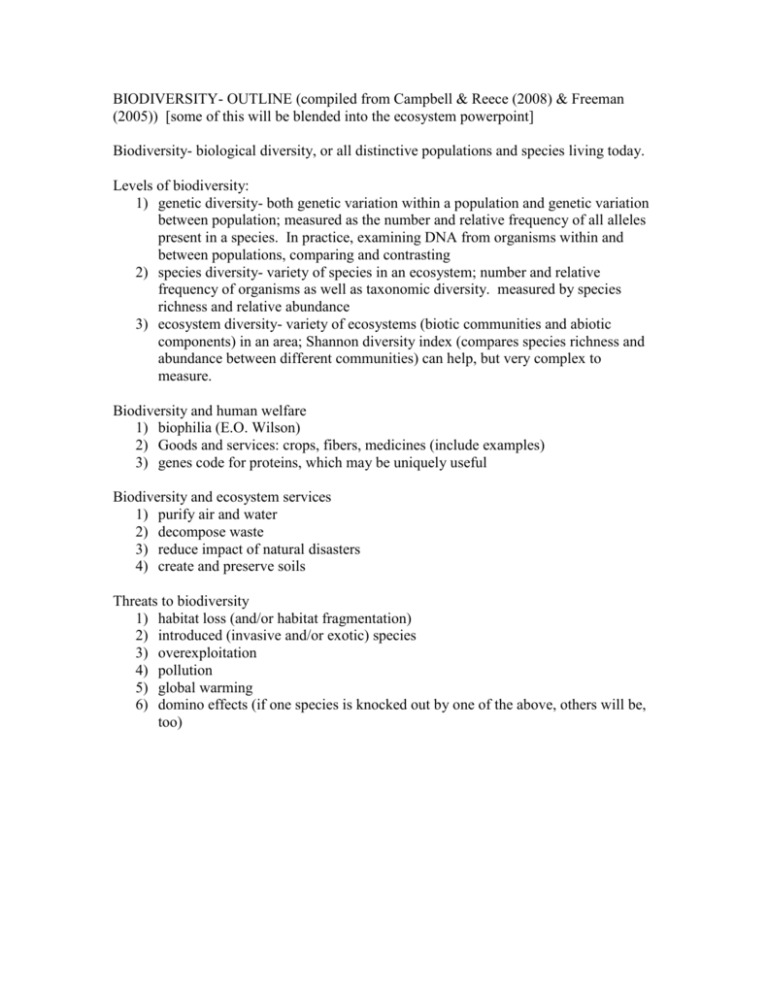
BIODIVERSITY- OUTLINE (compiled from Campbell & Reece (2008) & Freeman (2005)) [some of this will be blended into the ecosystem powerpoint] Biodiversity- biological diversity, or all distinctive populations and species living today. Levels of biodiversity: 1) genetic diversity- both genetic variation within a population and genetic variation between population; measured as the number and relative frequency of all alleles present in a species. In practice, examining DNA from organisms within and between populations, comparing and contrasting 2) species diversity- variety of species in an ecosystem; number and relative frequency of organisms as well as taxonomic diversity. measured by species richness and relative abundance 3) ecosystem diversity- variety of ecosystems (biotic communities and abiotic components) in an area; Shannon diversity index (compares species richness and abundance between different communities) can help, but very complex to measure. Biodiversity and human welfare 1) biophilia (E.O. Wilson) 2) Goods and services: crops, fibers, medicines (include examples) 3) genes code for proteins, which may be uniquely useful Biodiversity and ecosystem services 1) purify air and water 2) decompose waste 3) reduce impact of natural disasters 4) create and preserve soils Threats to biodiversity 1) habitat loss (and/or habitat fragmentation) 2) introduced (invasive and/or exotic) species 3) overexploitation 4) pollution 5) global warming 6) domino effects (if one species is knocked out by one of the above, others will be, too)

